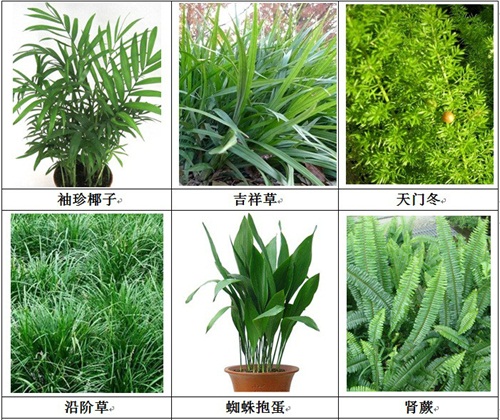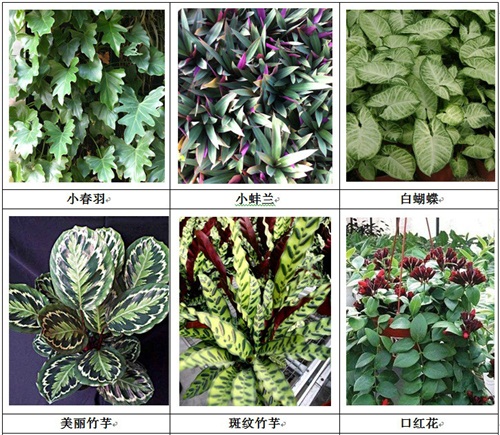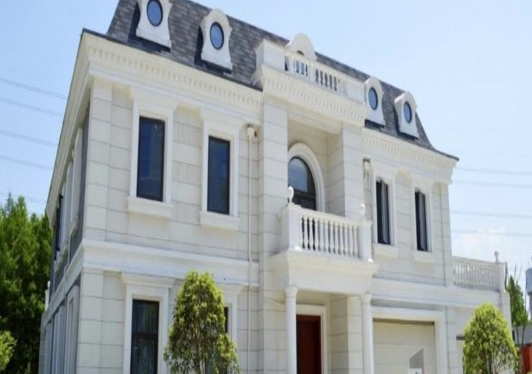The analysis of application cases, methods and plants of vertical greening
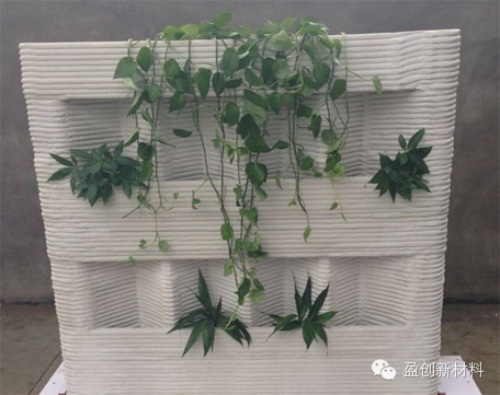
Through 3D printing technology, Yingchuang architecture technology can customized green coat for the building. Vertical afforestation is a method that corresponds to ground greening and greening in three dimensional space. It is a kind of greening that uses plant material to climb, fix, stick and hang vertically in the building or structure.
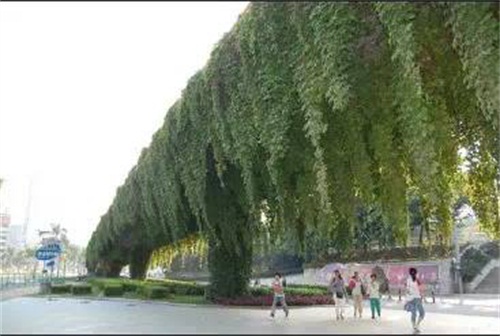
▲Hanging hanging
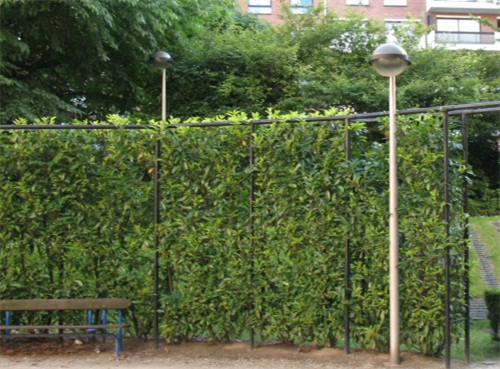
▲Implant
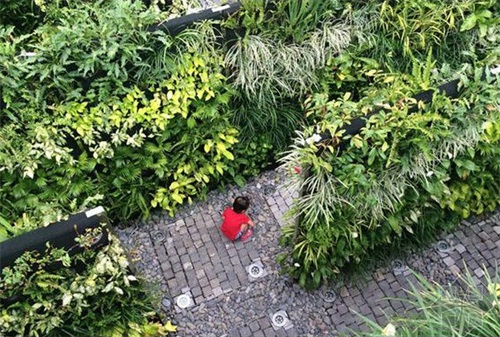
▲fixed
As a measure that improve the ecologic environment of city, vertical greening is a technology developed to cope with a series of social environmental problems such as accelerating urbanization, population expansion, shortage of land supply and increasing urban heat island effect. Compared with the traditional planar greening, vertical greening expands the space. Let "concrete forest" become true green natural forest, it is people in green concept from two dimensional space to three-dimensional space a leap. This will become a new trend of future greening.
The role of vertical greening
The natural beauty and ecological beauty of plants give the value of vertical afforestation, ecological and economic value.
Ornamental value: The softness of the plant and the new phase of the building increase the artistic effect of the building; Enrich the urban greening level, raise the green area, make the urban environment more clean and beautiful, natural ecology.
Ecological value: It can alleviate the urban heat island phenomenon, improve the microclimate, sterilize the dust, purify the air, reduce the noise, and improve the biodiversity.
Economic value: Thermal insulation for buildings is conducive to reducing energy consumption and energy conservation and emission reduction. It also protects the building surface and extends the service life of the building.
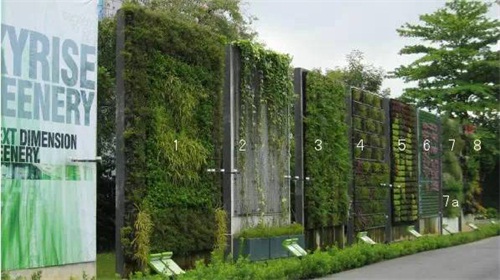
▲Nine plant walls were built: The thermal insulation effect, wind resistance, noise reduction and other parameter tests are studied through the experimental data were used to evaluate the ecological environment of each vertical greening system.
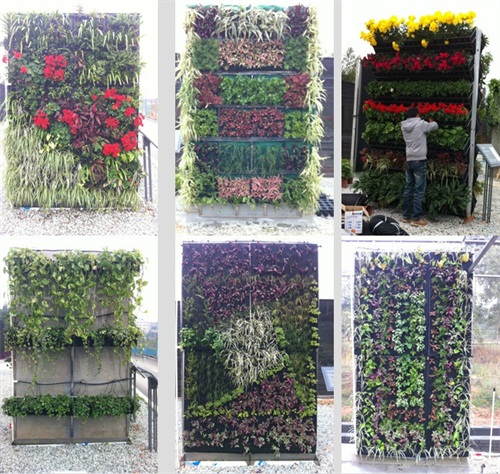
▲2011年

▲In 2014,
The form of vertical greening
The development of vertical greening depends on the upgrade of technology level. From the ground planting to the wall carrier planting, from the use of the vine year after year of climbing to complete the facade greening, to install the greening module to achieve immediate greening effect. Vertical greening technology has made great progress in the last ten years.
Traditional techniques are made up of plant-based and planar plantings. If the plants are planted with climbing plants, they can be planted with plants in the planting groove, or they can be landscaped by placing flowerpots. The effect of the plant is dependent on the climbing characteristics of plants; The new plant wall technology is a complete set of greening system, which consists of supporting system, irrigation system, cultivation medium system, plant material and so on. The innovation of technology makes the choice of plants more widely, creates rich green effect, expands the application scope of vertical greening.
According to the technical form, there are six main types of vertical greening. Traditional climbing style and basin type; module under new technology system; felt hydroponics; cloth bag; stuck type
1. Climbing/hanging type
The climbing/hanging type is made by using the adsorption, winding and other characteristics of the vine to attach to the wall, or set up a network, lasso or fence in front of the wall, so that the plants can be wound around it,
It includes four construction methods: the plant from the bottom up to the natural climbing, the plant from the top to the pendulous crane, the planting foundation groove on the wall, and the front of the wall to set the traction/climbing frame.
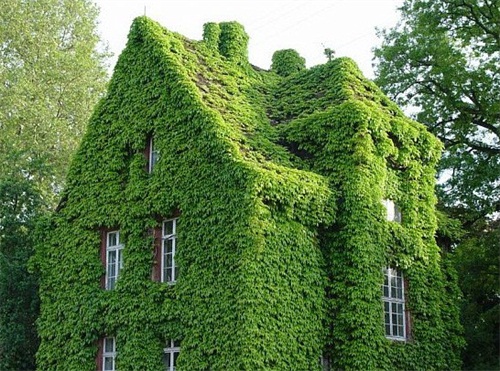
▲Natural climbs
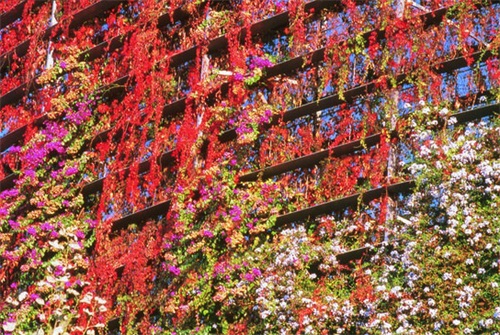
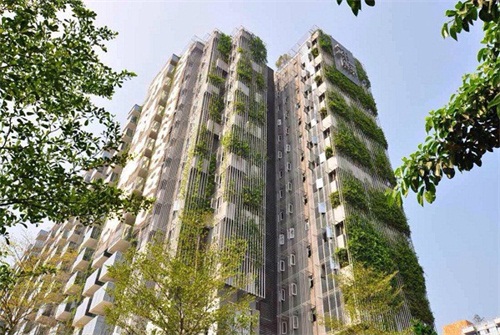
▲Tractive greening
2. Pendulum tub
Use container to plant potted plant, put directly on balcony, windowsill, or hang on balcony, metope, fence
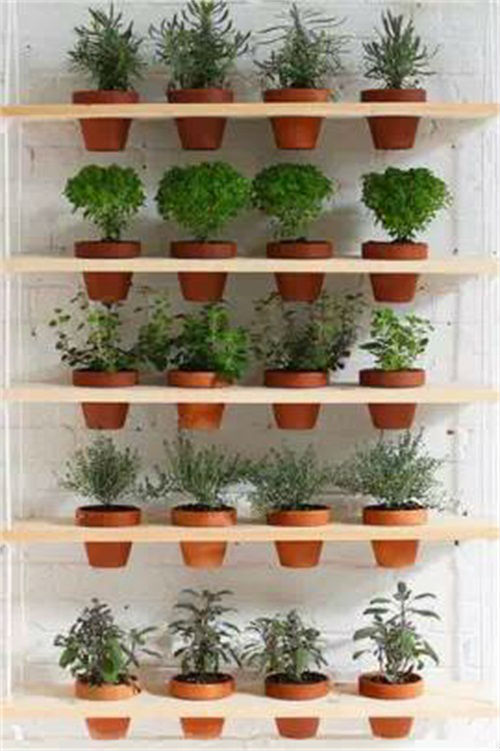
3. Module
By using the modular component to plant the plant, it is fixed on the stainless steel and other skeleton to realize the greening effect through the reasonable bonding or binding of the individual components of various shapes. Its structural level includes: steel structure bracket, plant planting base plate, planting matrix, plant, automatic drip irrigation system. Modular wall landscaping can be installed in the module according to the requirements of plants and patterns, and the installation will be made after months of pre-cultivation and maintenance, so as to form the greening of various shapes and landscape effects. Modular durability is good, suitable for high difficulty large area vertical greening.
Modular vertical green structure
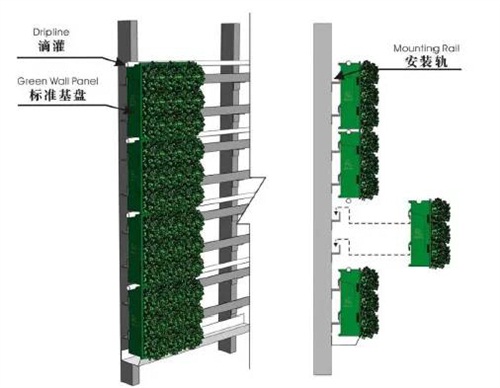
块式施工安装方式
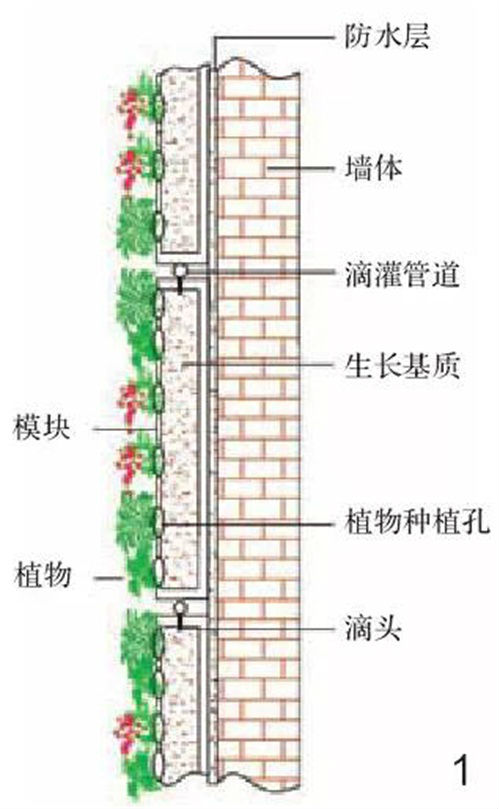
▲Modular vertical green structure
4. Hydroponics
The system is designed by the French for vertical gardens. The system will be plants cultivated in pocket cloth felt connected to the wall, the drip irrigation technology to maintain the cloth felt wet state, in order to supply plant growth. The open structure of the blanket system is conducive to the growth of plant roots and the integrated landscape effect. At the same time, the blanket system has a low total load on the wall, and the space occupied by it is small, which successfully solves the problems such as the wall load of vertical garden, anti-wind and anti-freeze and feeding supply.
The blanket system consists of metal frame, PVC board and blanket. A stainless steel frame is erected on the wall of the structure, and the PVC sheet is covered to form a layer of waterproof layer. Two layers of cloth felt on the waterproof layer. Cut open the surface cloth felt, place the root of the plant into the opening, and two layers of cloth felt to provide the plant roots with the growth attachment space. The green wall is equipped with automatic drip irrigation equipment. The water and nutrient solution are applied to the green wall, and the water will be extended along the cloth felt to provide the nutrients needed for the plant.
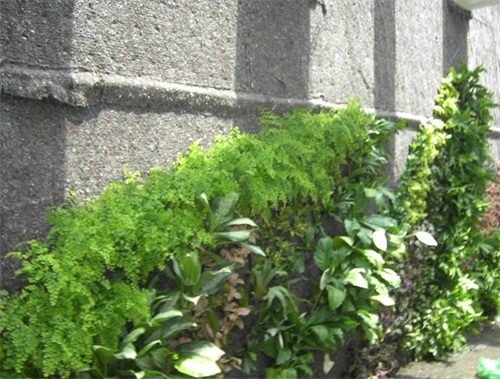
▲Blanket vertical green structure
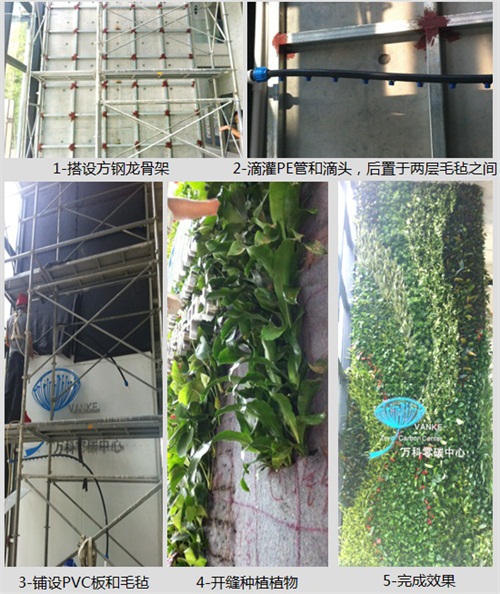
▲Construction method of vertical afforestation
with water culture on felt cloth
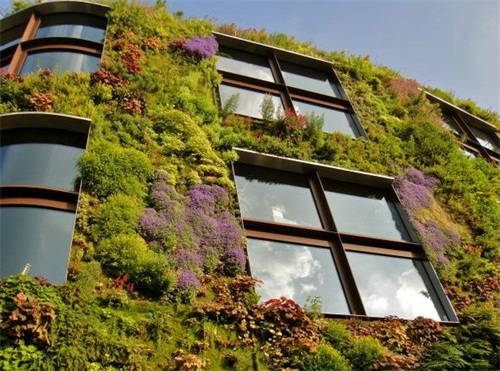
▲The caebranly museum in Paris(Patrick Blanc)
5. Cloth bag
The cloth bag type vertical greening is to lay the soft plant growth carrier directly on the wall of waterproof treatment, such as felt, coconut fiber, non-woven fabric. Then, the cloth bags are sewn on these carriers, the plant growth substrate is filled in the cloth bag, and the plants are planted to achieve vertical greening. Water supply can be infiltrated by means of seepage irrigation.

▲Cloth bag type vertical green structure
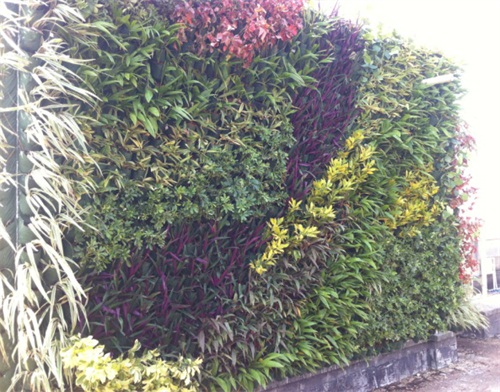
▲Vanke construction research base cloth bag type vertical greening
6. Stuck type
Spread the wall afforest is to spread on metope directly already cultivated green plant block. The plant is directly attached to the facade with felt, non-woven fabric and coconut fiber as the carrier, and no additional steel frame is needed to reduce the construction cost. Irrigation through irrigation systems; The total thickness of the system is only 5-375px.
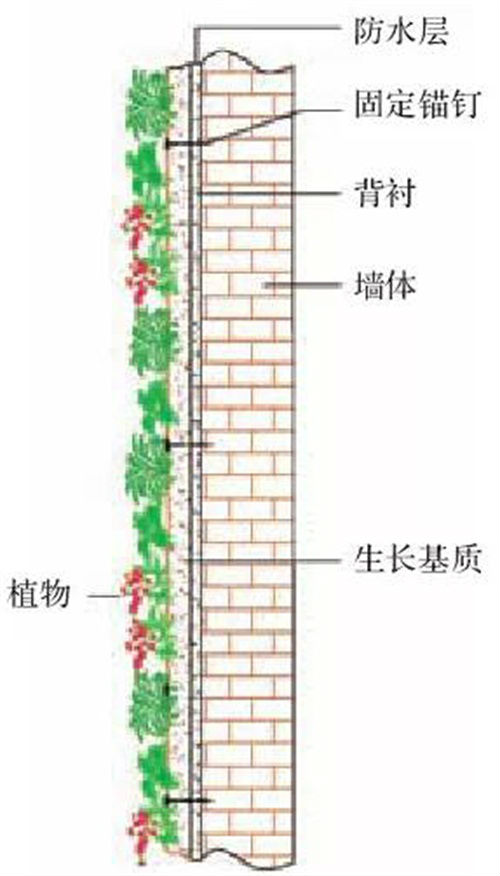
▲Paving vertical virescence structure
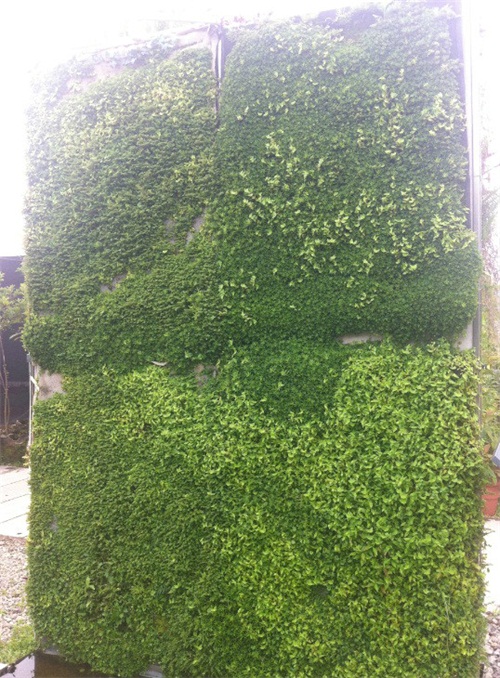
▲Wan Kejian plaster type vertical greening
The choice of Vertical greening ( South China):
The traditional vertical greening forms depend on the climbing, adsorption and winding characteristics of vine plants, and the selection of plants is narrow. The new vertical greening system can be more effective in supporting and fixing plants through the application of plates, boxes and blankets, which greatly expand the selection range of vertical greening plants.
1. Outdoor vertical green plants
(1) The sun environment is suitable for vertical greening plant: Light conditions better, appropriate choice very bright light, neutral and not shade tolerance plant species.
(2) The shady environment is suitable for vertical greening plant: The areas with poor lighting conditions are suitable for selecting shade, neutral and shade tolerant plants.
2. Indoor vertical afforestation plant selection
